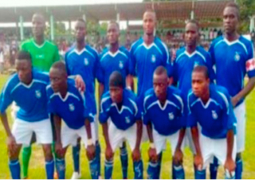A. In a cave, on a mountain in central
One of the companions of St. Francis wrote about the opening of the first crib on that Christmas night. 'The friars (the monks) from the nearby villages came. The men and women took their places bringing candles and torches to provide some light. Inside the cave, the crib was assembled: hay or straw was placed at the centre; the Christ child was placed on the straw; and the ox and donkey were then brought in.
Simplicity was honoured; poverty was exalted; humility was praised. The prayers and the singing of that small community rang out in the cold night air and the rocks all around echoed their songs of joy. Francis preached to the people about the poor King of Bethlehem. At the end of the vigil, everyone returned home full of joy.'
B. Ever since that moment, Christmas all over the world followed the example of St. Francis by making their own crib - either at home or in their Churches. Today, there is a museum in a village (called Greccio) near the cave where Francis assembled the first crib. It contains more than one hundred cribs from all over the world - each one trying to portray the mystery of the Christ child in the light of its own culture and traditions - just as Francis did for the people of Greccio. Such images can help us to discover a sense of joy, peace and hope - especially if we are weighed down by the many burdens of daily life. When we look into the face of any newborn infant in its mother's arms, we give thanks to God for the miracle of a new life. We experience a sense of peace and security. As a child rests in its mother's arms, even so my soul in your loving care, Lord (we pray in one of the Psalms.) Looking at the tiny figure of the Christ child, we gaze in wonder at the mystery that confronts us: the Word of God made flesh; earth joined to heaven; a helpless child who is both God and man.
'Though He emptied Himself taking the form of a servant, being born in the likeness of men.'
C. We sometimes find it hard to understand why God chose
In his Gospel, Luke tells us how the birth of Jesus took place. Caesar Augustus ordered that a census of the Roman world should be taken. This meant that all citizens had to enrol in their ancestral home and not in their place of residence. Hence, Joseph went up from
D. Luke's account of the actual birth of Christ is simple and brief. Mary gave birth to her firstborn son, wrapped him in swaddling clothes and laid him in a manger, because there was no room for them in the inn.
This is the harsh reality that Mary, Joseph and Jesus had to endure with patience and resignation from the moment of His birth. And that was only the beginning.
God continues to come to us also in and through the very ordinary events of daily life: disappointments, misunderstanding, small betrayals, tensions, failures of one kind or another.
'Come to me (Jesus says to us) all you who labour and are burdened and I will give you rest. Take up my yoke and learn from me and you will find rest for your souls. Yes, my yoke is easy and my burden light.'
God our Father, we thank you for the gift of your Son, Jesus. He has revealed to us the God that you are: A God who searches for us when we are lost. Please help us to come back home to you and to follow Him who came to bring us back to you. Grant this and all our prayers in the name of Jesus the Lord. Amen!
May Jesus, the Prince of Peace, help us to bring His peace and blessings to our families, to our country and to the whole world. Amen!
By Rt. Rev. Bishop Robert Patrick Ellison CSSp. Bishop of the Roman Catholic Diocese of


